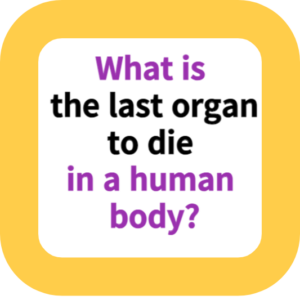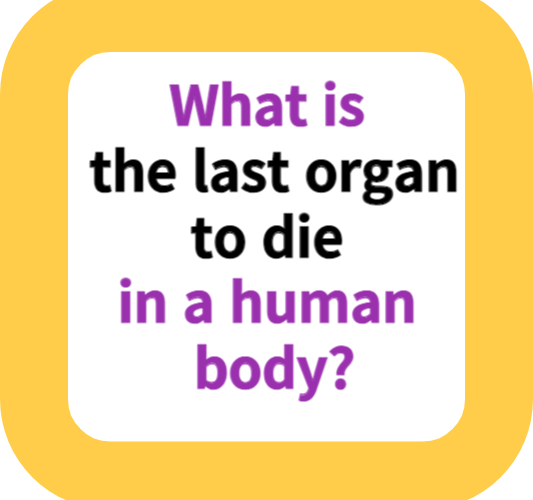What is the last organ to die in a human body?
Welcome to our latest blog post, where we delve into the intricate and fascinating process of organ failure during the dying process. This post explores the complex and highly individualized sequence in which organs cease functioning in the human body, shedding light on the resilience and vulnerability of key organs like the brain, heart, and liver.
We discuss their critical roles in maintaining life, the impact of medical interventions, and the significance of these organs in the context of organ donation and transplantation. Whether you’re a medical professional, a student of medicine, or simply curious about the wonders of the human body, this blog provides insightful and thought-provoking information on one of life’s most profound processes.
Join us as we unravel the mysteries of the human body at the end of life and discover how this knowledge can lead to life-saving opportunities through organ donation.
What is the last organ to die in a human body?

Introduction
Understanding the sequence of organ failure during the dying process is crucial for medical science, especially in the field of end-of-life care and organ donation.
This process varies significantly between individuals and is influenced by the cause of death, health conditions, and medical interventions. The sequence in which organs cease to function is not uniform, making it a complex and highly individualized phenomenon.
The Brain’s Resilience and Vulnerability
The brain, often considered one of the last organs to cease functioning, plays a pivotal role in maintaining vital bodily functions. Despite its resilience, the brain is extremely sensitive to oxygen deprivation. In the event of cardiac arrest or severe blood loss, the brain’s functions begin to deteriorate rapidly due to the lack of oxygen and glucose.
However, brain activity can persist briefly even after other organs have stopped functioning, a fact that is critical in emergency medical situations where rapid intervention can prevent irreversible brain damage.
The Heart’s Central Role in Organ Viability
The heart’s role as a vital organ is highlighted in the dying process. When the heart stops beating, the lack of blood circulation leads to a rapid decline in the function of other organs. The heart can sometimes continue to beat autonomously for a short period post clinical death, particularly if artificial life support is provided.
This temporary functionality is critical in cases where organ donation is considered, as the viability of organs such as the kidneys, liver, and lungs depends on continuous blood circulation.
The Liver’s Remarkable Endurance
The liver’s robust nature allows it to function longer than many other organs after death. Known for its vital roles in filtering toxins, producing proteins, and synthesizing essential hormones, the liver can remain active for several minutes post-mortem. This endurance makes the liver one of the most resilient organs in the context of post-mortem organ viability and transplantation.
Other Organs and Tissues
Besides the brain, heart, and liver, other organs and tissues also exhibit varying degrees of resilience post-mortem. For instance, skin cells can remain viable for a few hours, which is why certain post-mortem procedures, like fingerprinting, are possible.
Muscle cells and internal organs like kidneys may also retain some functionality for a brief period after death, particularly in controlled medical settings.
Organ Donation: A Lifesaving Consideration
The window of viability for organ donation is a crucial aspect of this discussion. Certain organs can be donated within a specific timeframe following brain death, offering a chance for life-saving transplants. The heart, kidneys, lungs, and liver are among those that must be harvested promptly to ensure successful transplantation.
Conclusion
In conclusion, the sequence of organ failure in a human body during the dying process is a complex, individualized phenomenon. The brain, heart, and liver often function till the end, playing crucial roles in life support and organ donation. Understanding the resilience and vulnerability of these organs is vital in medical science, especially in emergency care and organ transplantation.
This knowledge not only enhances our comprehension of the human body at the end of life but also opens doors to saving lives through organ donation.
